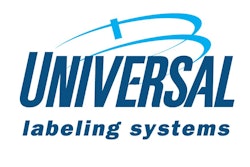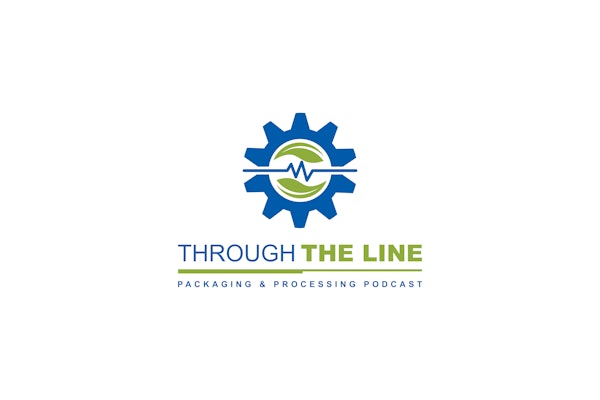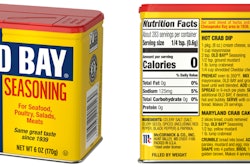At a glance, skyrocketing oil prices and marketplace demand for more-customized products don’t seem to go hand in hand. But they do, and they’re just two factors that will shape future decision-making about contract-packaging services.
On the one hand, the oil price spike has packaging teams looking harder at the type of material they use, and how much to use. At the same time, marketing and design teams are raising the bar for how it is used.
Now add in emerging factors such as growing societal demand for packaging that is recyclable or reusable, and the continuing emergence of new technologies and packaging tactics for attracting consumer attention. What emerges is the imperative for anyone who has a hand in contract-packaging services to be able to balance ever-increasing packaging value chain complexities with the need to simplify operations and procedures.
A cross-section of contract-packaging professionals raised these ideas with Contract Packaging magazine in cultivating a list of five trends that will drive near-term business across the industry. Our analysts also imparted advice on how those responsible for contract packaging management at consumer packaged goods (CPG) companies can approach co-packers to meet emerging challenges.
• Sustainability. The first trend, toward sustainable packaging, coupled with the desire to lower packaging costs, will converge to bring about more-frequent use of retro and recyclable packaging materials, as well as a trend toward less packaging in general, our experts say. CPG companies should be looking for contract packagers to assist in at least two ways.
1. Material use. Consider asking companies that may co-pack your next project to take a renewed look at packaging materials that have previously fallen from fashion. It may be time for them to shine again. That’s a trend Jeff Topits, director of technology and engineering for contract packager Diversapack (www.diversapack.com), Atlanta, GA, already has noticed. Co-packers generally had been moving away from working with paper, some board stocks, and cellophane. But these materials are being reintroduced as environmentally conscious options to materials such as plastics, which can’t always be recycled. Paper and board stocks are sometimes viewed as more cumbersome than plastics, but they are more environmentally friendly and can be marketed as such, Topits says.
“These materials are popular again—but for a different reason than they were originally used,” he says. “They’re more cumbersome and difficult to use, but they’re greener. I say that to become more environmentally conscious, we have to look backward to go forward. We have to revisit things, like paper, that are no longer popular.”
2. Greener design. CPG companies could re-evaluate the extent to which they use certain materials in packaging for another reason, says John Farren, a contract-packaging industry consultant who spent decades working in the business at Gillette Co. Expect continued high oil prices, which in July were hovering at record $140-a-barrel levels, to radically affect decisions on plastic packaging materials. Resins used in plastics production are a petroleum byproduct. Also, as energy prices rise, costs of materials used in packaging will rise, Farren predicts.
Better designs, fewer materials
To curb packaging costs, co-packers will be called upon for innovative packaging designs that will incorporate fewer materials. The leading edge of contract packaging has been moving upstream of assembly and filling activities and into design. Some co-packers have begun to hire experienced package-design talent away from CPG companies and design agencies, and the trend could accelerate. As part of the qualifying process, CPG companies should ask about a prospective co-packer’s expertise in design (i.e., is the company’s experience in packaging structure or graphics).
Whether intended or not, these changes will result in “greener” packaging, Farren says.
“My feeling is that as costs rise, there will be a serious rethinking about the packaging, the material itself, and the volume of packaging that goes into products,” Farren says. “We’ve seen the elimination of cartons for stick deodorants, and Wal-Mart was a big initiator of that.”
Anticipating a trend away from cartons such as chip-bottle containers, Nor-Cal Beverage Co. (www.ncbev.com) has brought a shrink-wrap machine into its West Sacramento, CA, co-packing facility, says Pete Grego, director of co-packing sales and new business development. Shrink-wrapping reduces packaging waste because it often eliminates the need for components such as supportive trays, inserts, and pads.
• Flexibility. Today’s retailers want products that are particular to their stores, yet consumers are demanding products that seem to be packaged just for them. Often, the differences are not in the product but in the packaging components. The label is perhaps the package’s most versatile element for customizing products to meet marketplace preferences.
A second trend, according to our analysts, is toward smaller production runs as promotional packaging strategies intensify and retailers change a greater proportion of their merchandise more often (see sidebar article on the facing page) to lure shoppers in their stores with new “surprises” upon each visit. Contract-packaging lines are ideal for shorter packaging runs, and they accommodate everything from high-volume to very-low-volume runs for a variety of projects—on very short notice, if necessary. To minimize downtime, some co-packers manage their own machine tooling for highly customized projects that require special machines or change parts.
New line
Nor-Cal recently upgraded its 16-oz can line and also added a line that can run 24-oz plastic and glass cans. “In beverages, one of the things that will be crucial going forward is having flexibility to package in various can sizes,” Grego says.
Co-packers are accelerating changeover times to meet expedited product life cycles. Diversapack is one of them. The company can reconfigure lines or convert facilities for a packaging project within one to two days of a CPG company or retailer request. Its in-house printing capabilities support this change-on-a-dime function by allowing for quick graphic changes on packaging, says Francene Lord, senior account manager at Diversapack.
It’s this type of custom-packaging speed and flexibility that makes contract packaging appealing to Scotts Miracle-Gro Co. Scotts favors co-packers for their flexibility in packaging its range of lawn-and-garden products.
“We can come to them with any product, whether liquid or bagged or canned aerosol, and they’re able to do it for us,” says George Hill, research principal at Scotts. “For a liquid bottle, we might have a unique size, and our co-packers can do that without a problem.”
• Product differentiation. The term is “last moment of differentiation.” Expect to hear more about it—a third trend—as it has the potential to save hundreds of millions of dollars in labeling, printing, and supply chain management costs, predicts Topits of Diversapack. In simplest terms, last moment of differentiation essentially means delaying aspects of the printing process so they can take place at the same time as package filling and assembly. When these processes are done simultaneously, package-printing responsibility shifts from the printer to the co-packer. This production efficiency leads to savings in packaging materials and in warehouse inventory reduction.
Using the last moment of differentiation model, items that use a common label, for example, could be slightly differentiated from each other at the point when the product is filled into the package.
Here’s one example of how it could work. A retailer could designate a blank area on a label that is filled in with customized information—a product price or brand slogan—later, Lord says.
“You could have a design change mid-stream, and the next bottle can have a different dollars-off statement on it,”
Lord notes.
‘What if you did away with labels?’
Retailers and CPG companies also are beginning to use last moment of differentiation to reduce inventory. A retailer, for example, can plan for an anticipated overstock on Super Bowl-themed packaging by asking co-packers to stop the packaging line to swap out logos on unprinted packages, Lord says.
Gazing into his crystal ball, Topits takes that idea a step further. “What if you did away with labels entirely by printing directly on bottles with no label?” he says. “That’s the kind of technical direction we’re pursuing in this area.”
• Trends identification: As a fourth trend, co-packers are becoming fortune-tellers of sorts to ensure they will have the capability to meet their customers’ changing packaging needs. Some have begun doing research to predict packaging trends. The results are leading them to outfit their facilities accordingly.
Nor-Cal, for one, has isolated a number of beverage-industry trends.
“There’s a belief that maybe two or three years down the road—because of how the commodity market works—bulk sugar will be brought up to the plant by tanker or rail car, and we’ll vacuum it out and bring it into the plant,” Grego says. Nor-Cal is adapting its plants with that future form of delivery in mind.
Nor-Cal follows packaging trends, too. For instance, Grego says tunnel pasteurization will accelerate during the next few years to respond to the need for packaged beverages with longer shelf life. In tunnel pasteurization, a product is filled and sealed, and then it enters a tunnel for a very high-heat-steaming process. Nor-Cal already has designated space for a $5 million tunnel-packaging unit.
• Location, location, location. As CPG companies extend their global reach, so too will their co-packers, Farren predicts in identifying a fifth trend.
“As CPG companies start getting into developing countries, they’ll look for partnerships rather than invest in their own production facilities,” Farren says. “They can use contract packagers as a portal to enter into those markets without adding to their own asset base.”
In the U.S., those CPG companies will look to package their goods as close to the consumer as possible. This distribution method saves transportation costs, allows companies to more closely target consumer trends to a specific population, and reduces excess inventory levels.
“If you can connect the packaging end closer to the consumer demand, you’ll be more accurate in meeting their needs,” Farren says. “If packaging is separated, as you’re forecasting your needs, you create more warehouse inventory than you need, just for protection.
“When you’re located closer to your consumer base, you’re more accurate than if you tried to figure out what consumers want three to six months from now,” he adds. “You could even produce today for three weeks out if your co-packer is close enough.”
Farren recommends that co-packers look to develop partnerships with CPG companies that operate nearby or that distribute their products in the vicinity of the co-packer’s operations. They also should consider developing new locations close to their largest customers and extending their global reach to growing manufacturing centers overseas.




























